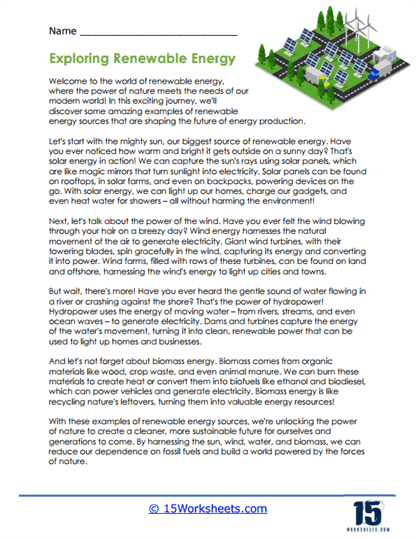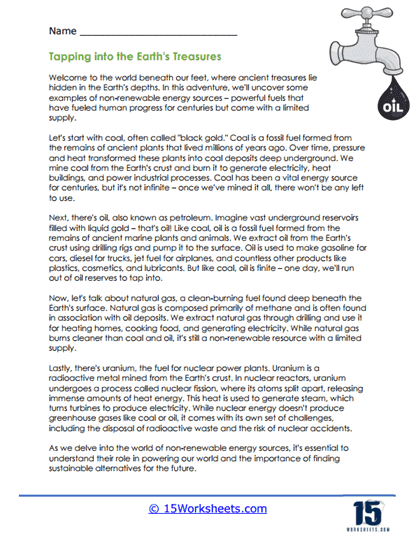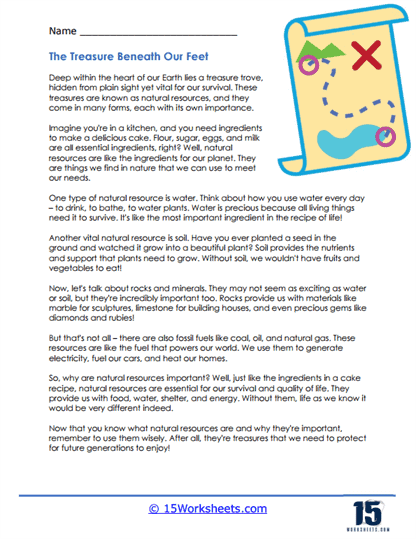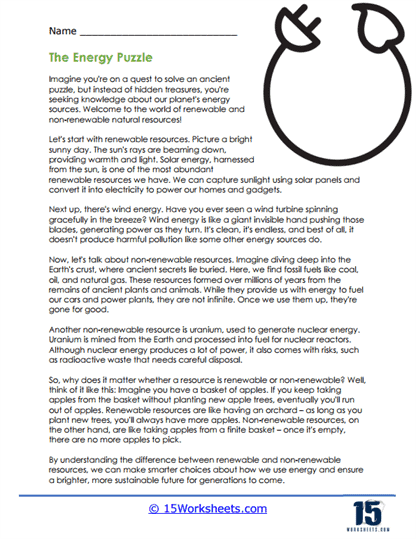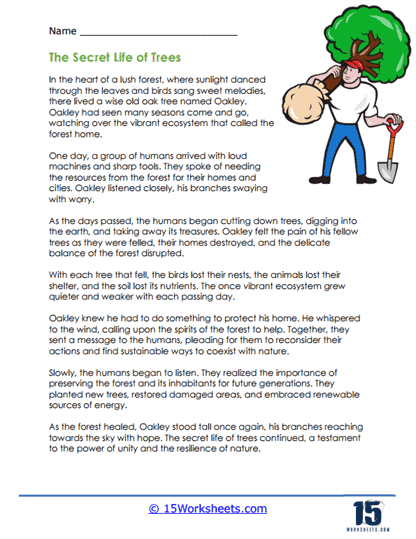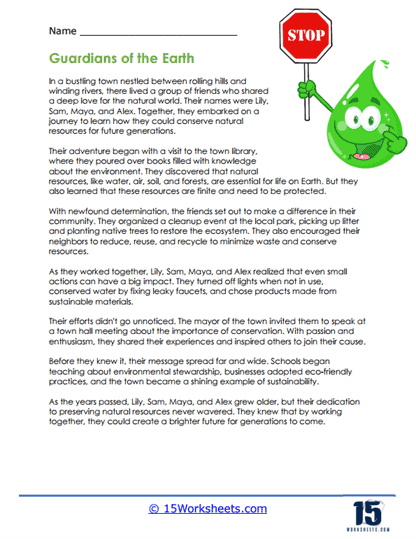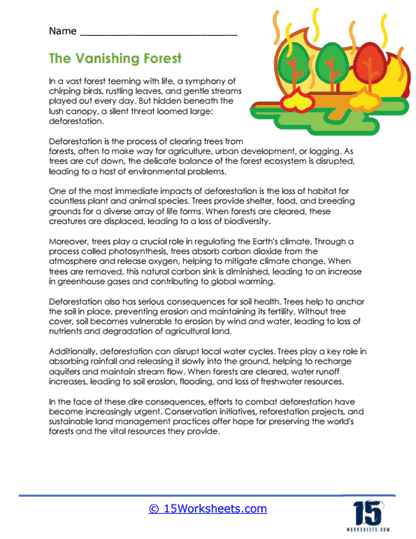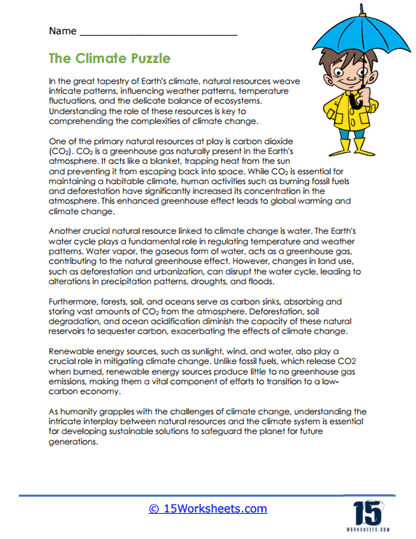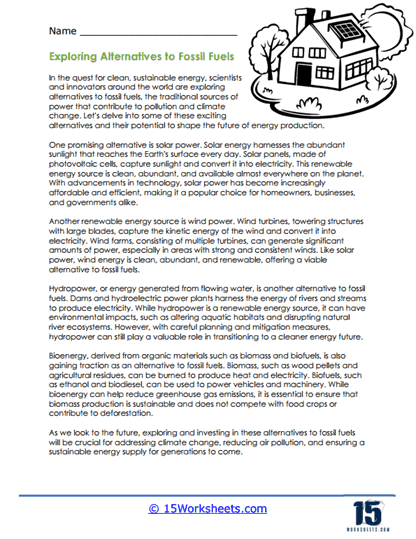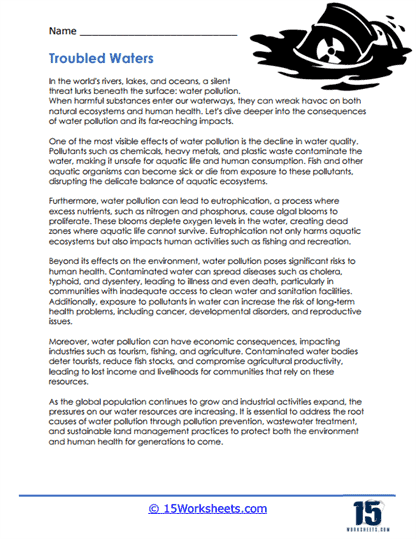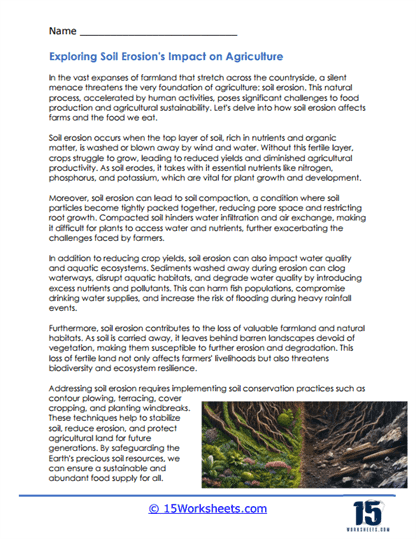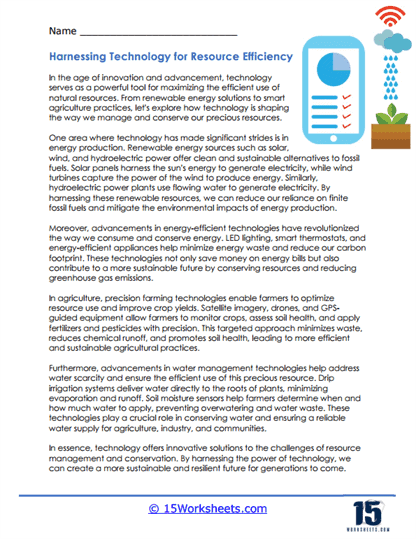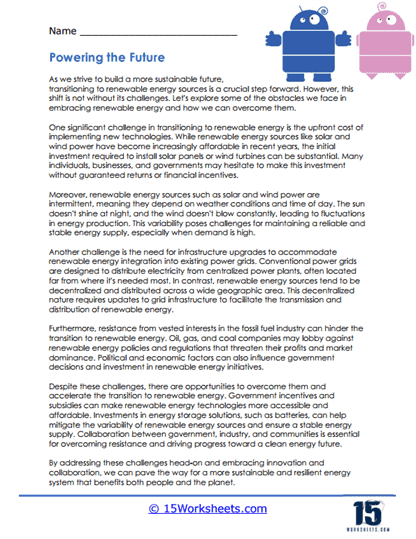Natural Resources Worksheets
About These 15 Worksheets
These worksheets will help students learn about the various natural resources available on Earth, their importance, how humans use them, and the need for sustainable management. These worksheets cater to a wide age range, from elementary to high school students, adapting complexity according to the audience’s understanding level. The exercises found on these worksheets aim to enhance knowledge, critical thinking, and awareness regarding natural resources through a variety of engaging and interactive tasks.
By engaging in these varied and interactive activities, students develop a multifaceted knowledge base, critical thinking skills, and a deep appreciation for the natural world and its resources. Through Natural Resources Worksheets, educators aim not only to inform but to inspire the next generation to take active roles in conserving and sustainably managing Earth’s precious resources.
The types of exercises included in Natural Resources Worksheets can be broadly categorized into several groups, each serving a different educational purpose and engaging students in distinct ways.
Identification Exercises – These tasks require students to identify different types of natural resources, such as water, minerals, forests, wind, and solar energy. The exercise might present students with images, descriptions, or scenarios, asking them to label or choose the correct natural resource being depicted. This type of exercise helps in the foundational understanding of what natural resources are and how diverse they can be.
Classification Activities – Classification exercises take identification a step further by asking students to classify resources into categories such as renewable or non-renewable, biotic or abiotic, and direct or indirect. This encourages deeper thinking about the characteristics of each resource and their long-term availability and sustainability.
Matching Tasks – These involve matching natural resources to their uses or products made from them. For instance, students might match crude oil to gasoline, trees to paper, or sunlight to solar power. Such exercises highlight the practical application and importance of natural resources in daily life and the economy.
Case Studies and Scenario Analysis – These exercises present real-life scenarios or case studies about natural resources, their management, and conservation efforts. Students might analyze the impact of deforestation in the Amazon, the benefits of wind farms, or the controversy surrounding fracking. This develops critical thinking and problem-solving skills, as students assess situations, discuss implications, and propose solutions.
Graphs and Data Interpretation – These exercises present students with graphs, charts, and data related to natural resource consumption, conservation efforts, or impact assessments. Students learn to interpret data, draw conclusions, and understand the quantitative aspects of natural resource management. These exercises leverage multimedia resources to provide a more immersive learning experience about natural resources.
Sustainability Planning – These exercises challenge students to design sustainable solutions for using natural resources. They might plan a sustainable city, propose a conservation program, or develop a renewable energy project. This type of task encourages forward-thinking and innovation regarding the sustainable use of natural resources.
Experiments and Observations – Some worksheets guide students through simple experiments or observation projects to understand natural processes, such as water filtration, soil erosion, or plant growth. These hands-on activities connect theoretical knowledge with practical experience.
Comparison Studies – These tasks ask students to compare and contrast different types of natural resources, their efficiencies, sustainability levels, or impacts on the environment. By evaluating the pros and cons, students gain a nuanced understanding of the complex issues surrounding natural resource use.
What are Natural Resources?
Natural resources are materials or substances that occur in nature and can be utilized by humans to meet various needs, ranging from basic necessities like food and water to complex applications in industry and technology. These resources are derived from the Earth and its environment without the need for human creation or manufacturing. The classification, use, and conservation of natural resources are central themes in environmental science, economics, and sustainable development. Understanding natural resources involves examining their types, formation processes, uses, and the challenges associated with their exploitation and conservation.
Types of Natural Resources
Natural resources can broadly be classified into two main types – renewable and non-renewable resources.
Renewable Resources – These are resources that can replenish themselves naturally over short periods (relative to human lifespans). Renewable resources include solar energy, wind energy, biomass, water (though the availability of fresh water can be limited in certain contexts), and geothermal energy. The sustainability of renewable resources depends on the rate of use compared to the rate of replenishment. For example, trees in a forest are considered renewable if they are harvested at a rate that allows the forest time to regrow.
Non-Renewable Resources – These resources exist in finite quantities or are regenerated over geological time scales, making them exhaustible within human timeframes. Non-renewable resources include fossil fuels (like coal, oil, and natural gas), minerals (such as gold, silver, and iron), and certain groundwater reservoirs. Once depleted, these resources cannot be readily replaced, which raises concerns about their long-term availability.
Formation Processes
The formation of natural resources is a complex process that occurs over vast time scales, involving a variety of geological, atmospheric, and biological mechanisms:
Fossil Fuels – Formed from the decayed remains of plants and animals over millions of years under high pressure and temperature conditions beneath the Earth’s surface.
Minerals and Metals – Created through geological processes such as volcanic activity, sedimentation, and crystallization, leading to the formation of ore deposits.
Soil – Developed from the weathering of rocks and the decomposition of organic matter over thousands to millions of years, providing a medium for plant growth and a habitat for numerous organisms.
Water – Part of the Earth’s hydrosphere, existing in various states (liquid, solid, gas) and involved in the hydrological cycle that includes evaporation, condensation, precipitation, and runoff.
Atmospheric Resources – Such as air and wind, are critical for life and energy generation. The atmosphere also plays a key role in climate regulation.
Uses and Importance
Natural resources are foundational to human civilization, providing materials for shelter, clothing, food, and medicine; energy for heating, transportation, and industry; and inputs for technological development and innovation. The management and use of these resources have significant economic, environmental, and social implications, influencing everything from global economies to local communities’ sustainability.
Challenges and Conservation
The exploitation of natural resources presents several challenges, including depletion of non-renewable resources, environmental degradation, habitat destruction, biodiversity loss, and pollution. The concept of sustainable development emerges as a response to these challenges, advocating for practices that meet current needs without compromising the ability of future generations to meet their own needs. This includes the development of renewable energy technologies, recycling and efficient use of materials, conservation efforts to protect ecosystems, and policies aimed at reducing overconsumption and waste.


